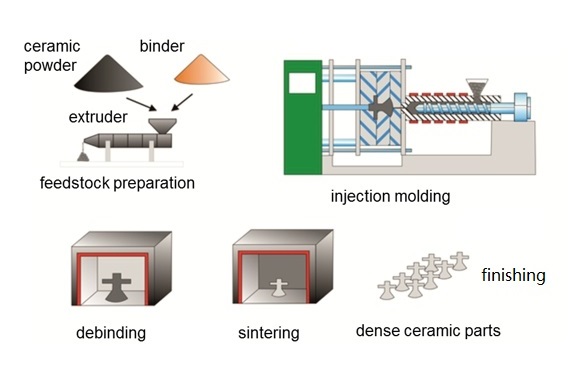What Is Ceramic Injection Molding And Describe The Process

1 when powder technologies are in question the key step in production process is choosing the adequate ceramic powder.
What is ceramic injection molding and describe the process. The patterns that ceramic mold uses are plaster plastic wood metal rubber etc the pattern is the shape body of the desired part. The injection molding process requires the use of an injection molding machine raw plastic material and a mold. This process also gives a low grade of toleration. The feed material used for injection molding contains a mixture of ceramic powder with thermoplastic polymer plasticizer wetting agent antifoaming agent.
Ceramic injection molding is an innovative new process at indo mim under a six sigma controlled environment. The plastic is melted in the injection molding machine and then injected into the mold where it cools and solidifies into the final part. But the process is different. The ceramic injection molding process consists of four basic steps.
A guide to the technology for end users and designers. The ceramic molding process is a production method which guarantees the precision required and also gives a good surface finish using a high temperature method to better structure and shape parts. The ceramic injection molding is very suitable for high volume production of complex design with tight tolerances like bonding capillaries. Equipment used for injection molding is similar to that of extrusion.
If you are considering metal injection molding mim or ceramic injection molding cim for the production of your components take a look at our extensive design guide for end users. The 4 basic processes of mixing injection debinding and sintering are similar to that of metal injection molding mim. Ceramic injection molding cim is a manufacturing process used to mass produce precision ceramic components with complex geometries. Cim is also a good option when you need to replace plastic and.
Feedstock preparation injection molding debinding process and sintering fig. The cim process gives production engineers and product designers more versatility in the use of ceramics as an alternative material with higher productivity lower manufacturing cost s and improved product performance. Process flow for capillary manufacturing process stage 1.












































